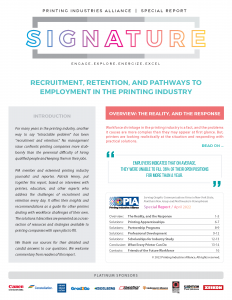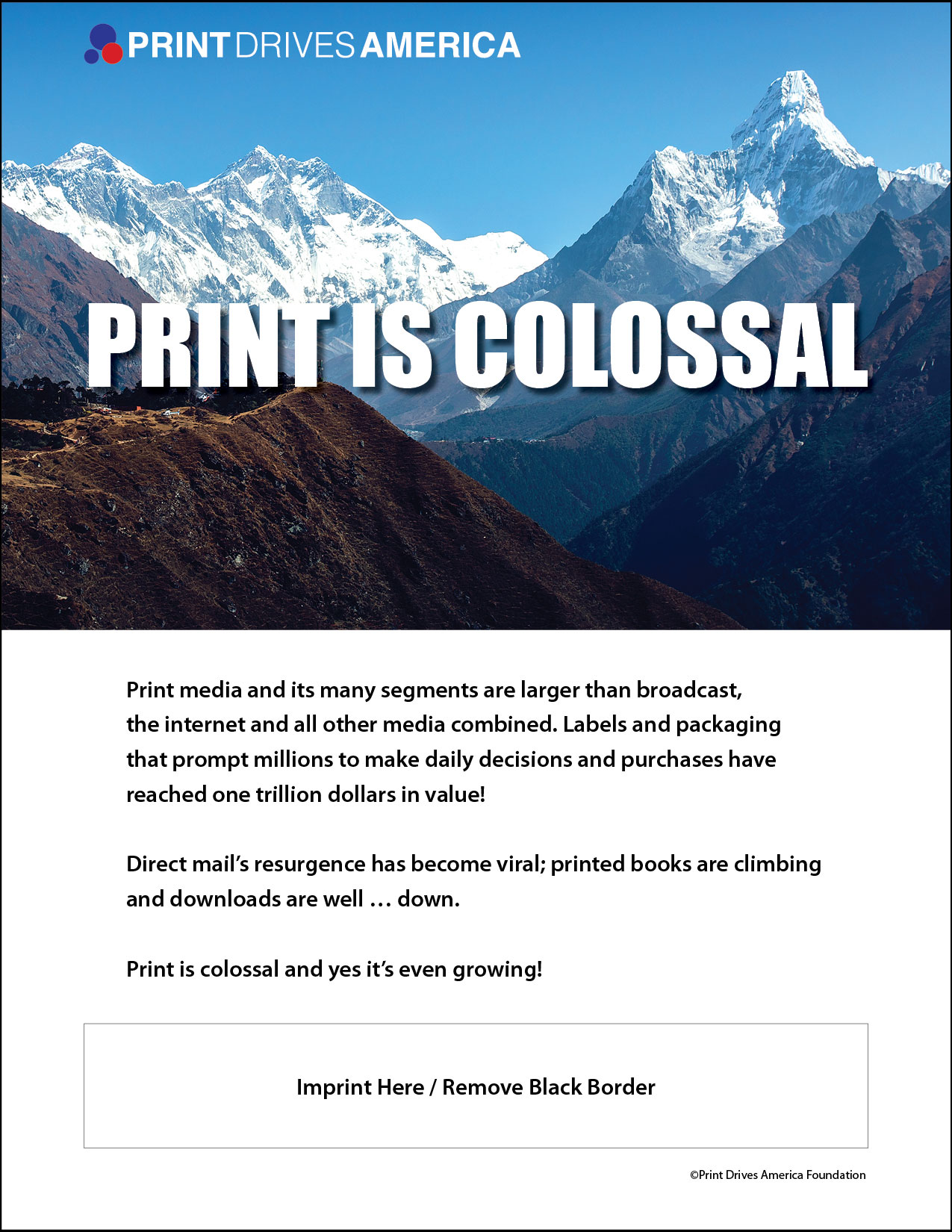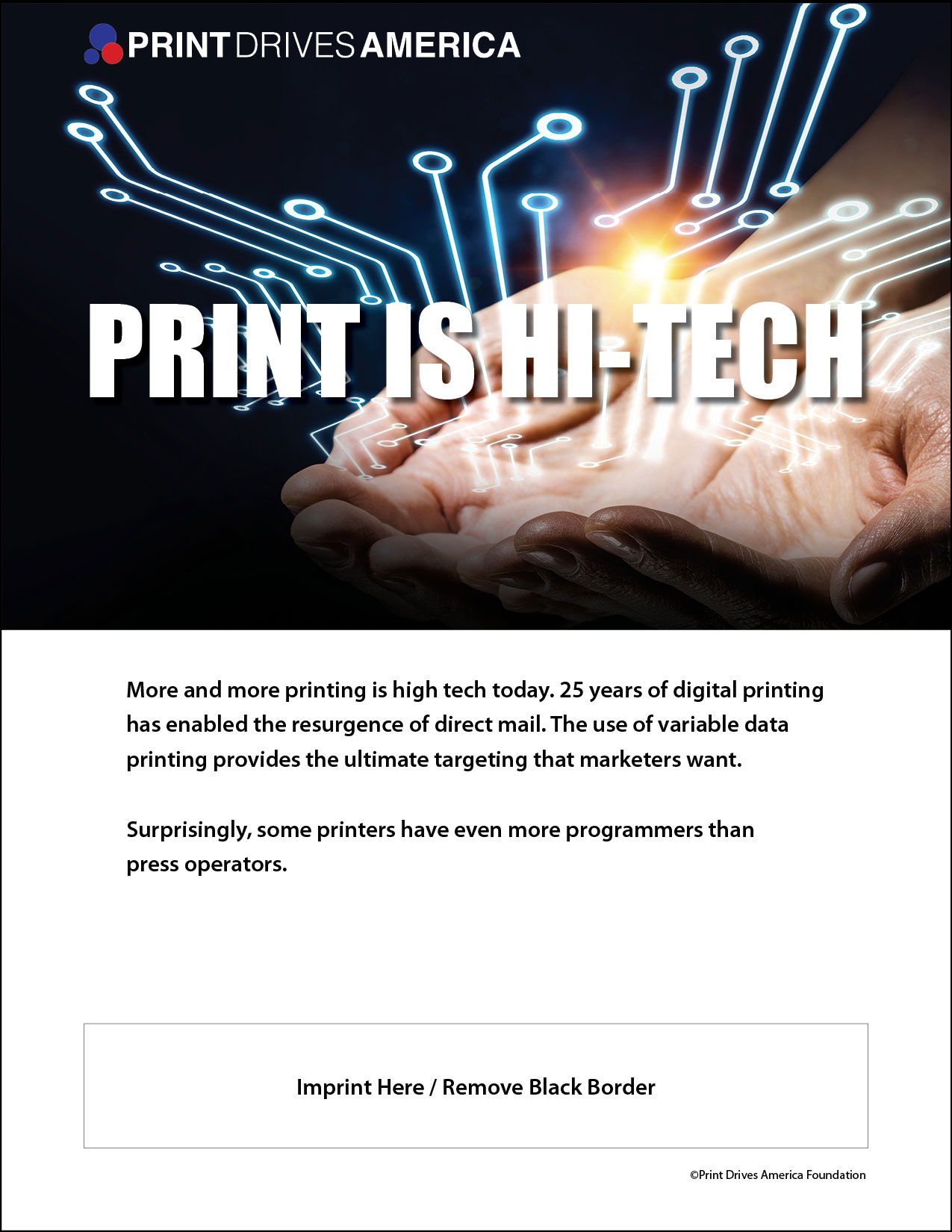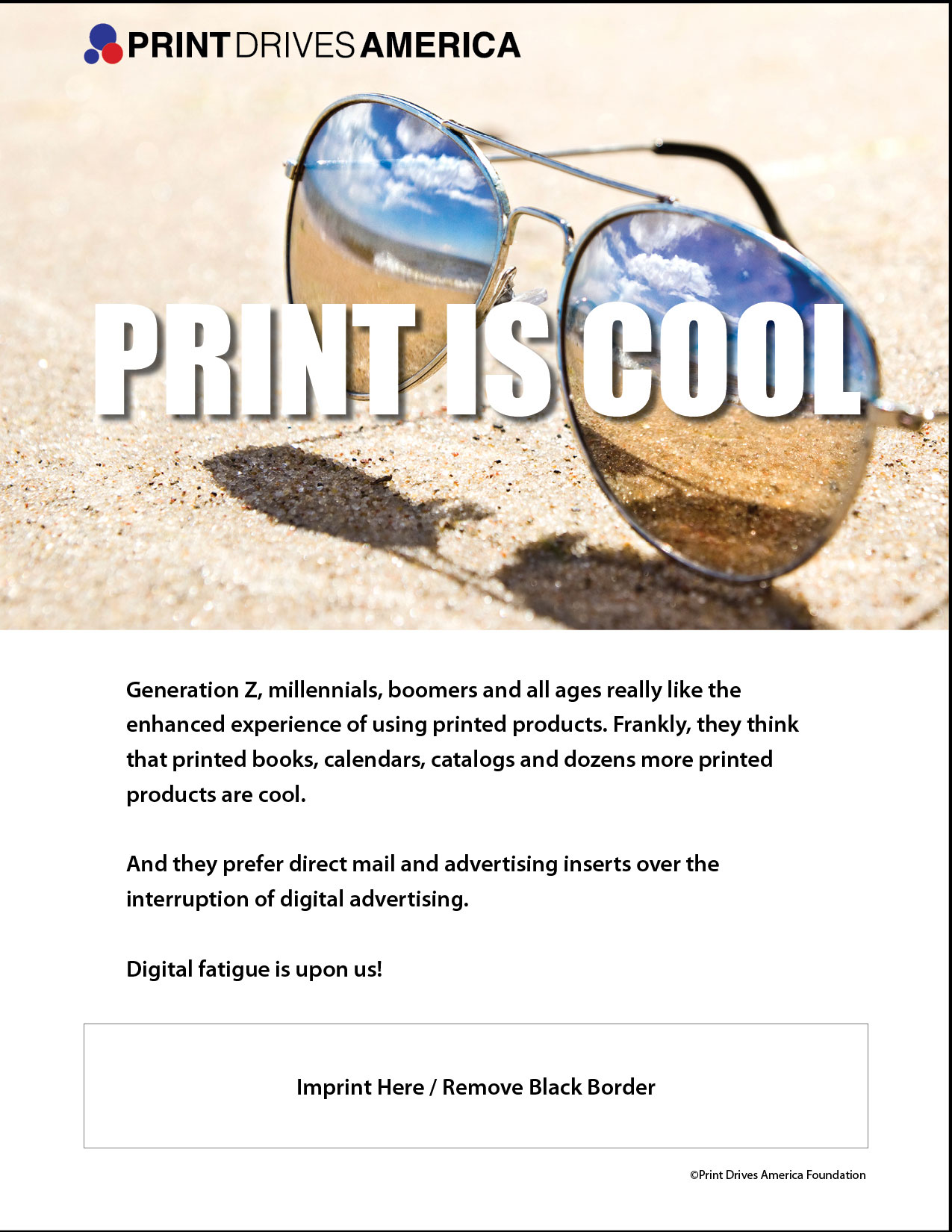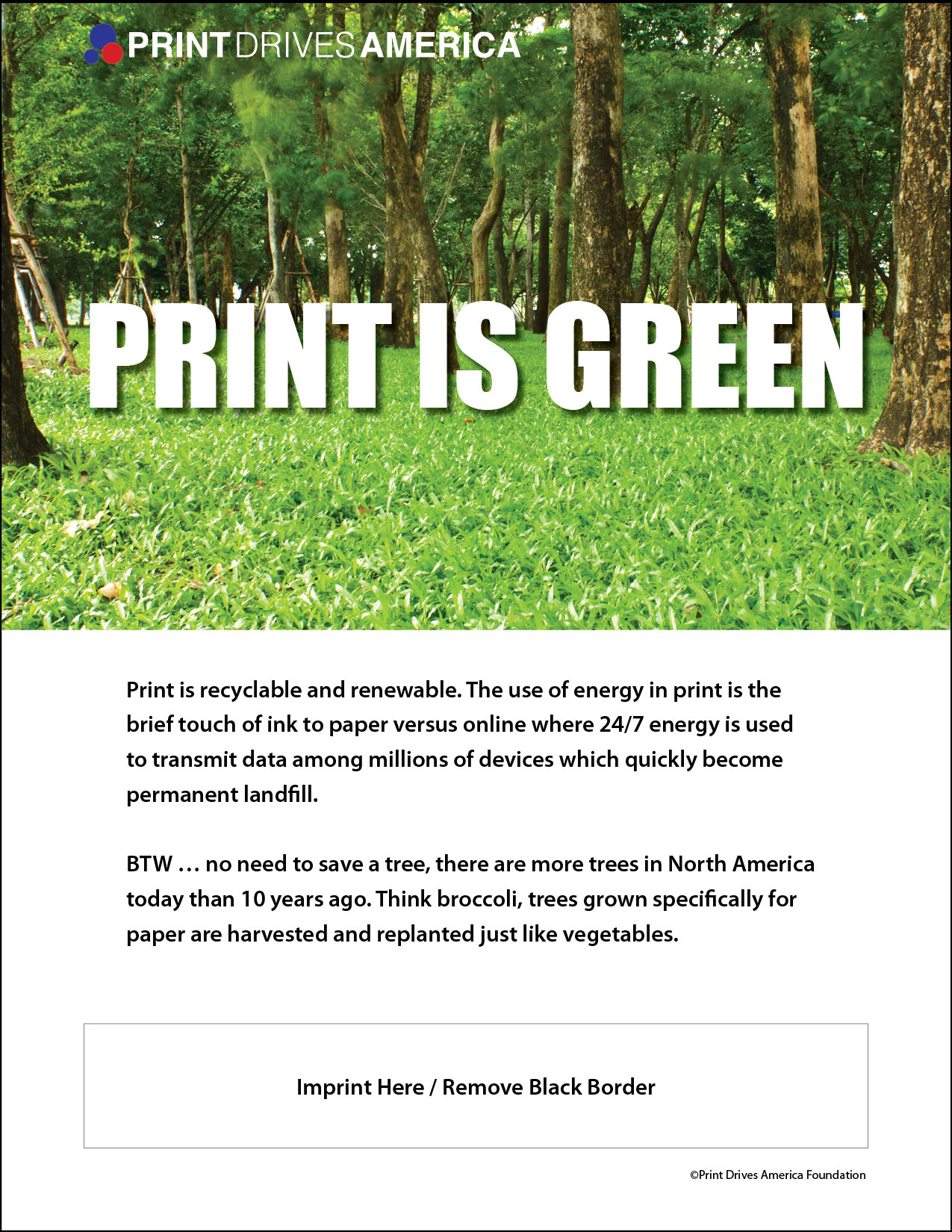By Patrick Henry, Liberty or Death Communications
Solutions: Professional Development – Part 4 of the White Paper: Recruitment, Retention, and Pathways to Employment in the Printing Industry
Solutions: Professional Development
Three paths to learning for print personnel – one operated by a trade association, one created by a leading university, and one offered by a leading manufacturer – illustrate that opportunities for job enrichment and professional development are there for the taking by those who want to benefit from them.
PGAMA, Print[ED], and PrintSIP
In 2007, Paul Foster, then a printing teacher at a Baltimore County, MD, technical high school, was asked to obtain accreditation for the school’s printing curriculum under Print[ED], a standards-based rubric endorsed by the printing industry. Today, as vice president of Printing and Graphics Association MidAtlantic (PGAMA), Foster oversees a network of Print[ED]-accredited training programs in Maryland that support an initiative known as PrintSIP: an adult learning experience that helps employers keep workers’ skills sharp and their loyalty intact.
In 2001, Foster had witnessed the closing of the last post-secondary printing program in Maryland. Losing the academic route to continuing professional development inspired him to create an alternative solution that printing companies could offer to their employees, confident that the training would be up to industry requirements. The idea came to fruition in 2015 with the help of an Employment Advancement Right Now (EARN) grant from the state of Maryland.
This is the concept that underlies PrintSIP, PGAMA’s Print Strategic Industry Partnership. It consists of four training modules that run for five weeks, twice a week, for two and a half hours per session. Taught with a combination of lectures and hands-on demonstrations are: introduction to graphic communications; digital production printing; offset press and binding / finishing; and digital file preparation and output.
The courses are conducted at four Maryland high schools with lab facilities approved by Print[ED], PGAMA’s accreditation program for schools that teach print and graphics. The modules are based on Print[ED] competencies, and instructors also are Print[ED]-certified.
Standards of Excellence
Print[ED] accreditation rests on six standards: evaluating the quality of the instructor; assessing the equipment and resources of the training facility; vetting the content of the curriculum; tracking program outcomes for students; having an active advisory committee; and operating on a budget that will sustain the program. Upholding the Print[ED] standards assures the quality of the PrintSIP program, which awards certifications to students after they complete a skills assessment.
PrintSIP’s other key ingredient is public funding. Since its launch in 2015, the program has received $350,000 in EARN grants from the state of Maryland. Additional money from a fourth EARN installment is anticipated. “That allows us to provide the training for free, so that companies and members in this area don’t have to pay for that,” Foster says. “We cover it.”
So far, that support has made it possible for 105 people to complete courses with Print[ED] certification. COVID-19 temporarily halted some of the progress when the teaching labs had to close and registrations for the modules fell off, according to Foster. COVID restrictions led PGAMA to develop a virtual edition of the introductory course, in which working with “a box of stuff” supplied to students before they start the online sessions substitutes for hands-on exercises in class.
One of PrintSIP’s initial objectives, a “learn-to-earn” commitment by PGAMA members to interview those who complete the courses, has not come to pass, Foster says. This was because most of those who signed up were “incumbent workers” – people already employed. “They knew what the industry was about, and they were able to take advantage of the courses.”
The Sound of Press ‘Thunder’
The program wasn’t to blame for the dearth of newcomers. “It is virtually impossible to convince someone who is not familiar with printing at all to attract them to take part in this training,” Foster observes. “They don’t have any idea of what they’re getting into, because they’ve never been into a pressroom, they’ve never smelled blanket wash, they’ve never heard the thunder of a 10-color Ryobi turning out at 18,000 an hour.”
“Sometimes you get somebody where it does hit the right notes with them,” Foster says. “But it’s hard to get new people into the industry, to attract them to things like that.”
He acknowledges that on balance, PrintSIP has been more effective for retraining and retaining current employees than for recruiting new ones. Job enrichment through professional development, he points out, breeds job satisfaction – the foundation of long-term loyalty.
Trainees new to their jobs “had a lot of light bulb moments where they said, ‘Oh, that’s how that works,’” Foster explains. Given insight into the bigger picture of how a printing plant operates, “I think they can enjoy it better. They have a purpose of why what they do is important.”
“The mail room knows that the press operators are going to give them a certain kind of work in a certain kind of way. Somebody used to say, ‘just do this’ when you got a got a task to do. Now they’re thinking about it more.”
Print[ED] and PrintSIP don’t belong exclusively to Maryland. Foster says that nationally, 150 schools have obtained or are close to obtaining Print[ED] accreditation. Georgia is home to the largest number of Print[ED] schools, with 32; there are 17 in Maryland.
At least two other regional printing trade associations have expressed interest in developing PrintSIP programs of their own, Foster notes. The groups will have to provide Print[ED]-accredited facilities and instructors in their membership areas, and they will need funding from state programs comparable to Maryland’s EARN in order to offer the training without cost. But, thanks to Foster and PGAMA, they already have proof that when printers take training and development into their own hands, the results can be satisfying indeed.
The Packaging School at Clemson University
R. Andrew Hurley, PhD, is an associate professor of Food, Nutrition and Packaging Sciences in the College of Agriculture, Forestry and Life Sciences at Clemson University, where he also leads the packaging design program at the school’s Sonoco Institute of Packaging Design and Graphics. He says that seven years ago, streams of e-mails from around the world inquiring about packaging education made him realize that accessible training in the subject would be in strong demand.
Hurley notes that when it comes to employment, packaging is feeling the same pain as other kinds of print-based manufacturing. “Packaging has always had a gap in it,” he says. “We actually have more companies that are requesting new recruits than we have new recruits for. That’s why training is really important. It’s difficult enough to find a qualified candidate, but then to insure that they have a specialization in packaging is in many ways very rare to find.”
This inspired him to develop an online curriculum that became, with Clemson’s blessing, The Packaging School. It is a program of “andragogy,” or education for adult professionals, that wasn’t available within the pedagogical frameworks of most other colleges and universities.
Under Hurley’s direction, The Packaging School has trained nearly 10,000 people in courses ranging “from microlessons to fill in knowledge gaps” to full programs for those aspiring to become candidates for packaging positions. With the exception of hybrid courses that meet in person for their opening sessions and then go virtual, all of the coursework is fully online. The teaching staff of 12 have master’s or doctoral degrees in packaging-related subjects.
Continuous Curricular Improvement
The curriculum expands continuously, Hurley adds. “At any point in time, we’re probably working on a half dozen new courses. I like to tell my students that your biology textbook is probably going to be A-OK 100 years from now, but your packaging textbook may be obsolete in way less time.”
Nearly all of The Packaging School’s trainees are working professionals seeking either to fill personal knowledge gaps or to find ways in which packaging can add more value to their organizations. It’s common for employers to cover the costs of training, according to Hurley, who says students often come to the program for customized training in “cohorts” of five, 10, or even 40 people.
The most popular offering is the Foundations course, a “Packaging 101 boot camp” that consists of daily, 20-minute online sessions over 20 days. Those who complete it get a “starting point vocabulary” they can then build on, Hurley says. Also popular are the courses in corrugated containers, paperboard cartons, and sustainability. Learners can earn certificates in packaging science, packaging management, and automotive packaging.
Education by the ‘Chunk’
Hurley emphasizes that all of the training can be customized to users’ specific needs. “At The Packaging School, we can deploy a turnkey culture of learning for you,” he says. This could include giving the workforce access to more than 4,000 “chunks of information that usually can be consumed in less than seven minutes.” The chunks are drawn from lessons across the school’s entire catalog of programs. Each one, Hurley says “should have a direct application to something you’re doing.”
The Packaging School has attracted its thousands of students despite doing very little direct outreach, Hurley points out. Word of mouth has brought in what he calls “a very interesting gamut of folks” wishing to hone their packaging skills, including employees of large brands that purchase packaging.
Expanding the knowledge of this group is crucial, Hurley observes. “Many people come in thinking that packaging is a commodity, and it is not. So our goal is to help educate brands that packaging isn’t a commodity. It is a science, and understanding it will allow you to exceed your goals within the brand.”
Hurley says that knowledge gaps exist even among the personnel of packaging manufacturers. “It is very common to see that even folks in upper management don’t know the materials they work with, or are even able to name the processes that those materials go through to convert their finished goods. It really shows the need for education at the enterprise level.”
“if we want to change the paradigm of our industry, it’s making sure that everyone has a comprehensive understanding of the materials, processes, and technologies of packaging,” Hurley advises. “And that will rise all boats, if we all can have that foundation.”
The Kathleen Kyme Press Forward Scholarship
No one knows better what it takes to run a digital press than the manufacturer of the equipment. By the same token, no one knows better than an OEM how tough it has become for the OEM’s customers to find operators skilled enough to make the most of what the equipment can do.
HP and Dscoop, the user group for HP digital presses, have acted on those insights by creating the Kathleen Kyme Press Forward Scholarship, a pathway for recipients to enter the industry as professionally trained operators of HP Indigo digital presses. Honoring the memory of HP solutions architect Kathleen Kyme Giudice, the program offers fully-paid, hands-on equipment training as well as exposure to potential employment opportunities within the Dscoop community.
HP understands the need for manufacturers to take a hand in addressing the industry’s recruitment difficulties, according to Stephanie Bell Hill, business development manager for HP’s personalization and industrial business. The company’s leadership, she says, “is aware that trained operators of digital presses are in short supply due to an aging workforce, a shift from analog to digital, and lack of awareness of the print industry as a rewarding career.”
“The recruitment, retention, and training of our future workforce has been consistently identified as the number one issue that faces our industry today,” Hill acknowledges.
Through the Kathleen Kyme scholarship, HP aims to find qualified applicants, give them Indigo-specific press operator skills, and bring them to the attention of Indigo users who need those skills to fill current job openings.
“Qualified” means what the word implies: candidates must have a minimum of a two-year college associate degree, technical school certification, or equivalent work experience in the graphic arts industry, among other requirements. Special consideration is given to graduates of vo-tech high schools with Print[ED] certification.
Those accepted to the program will spend from five to 10 days at HP’s Experience Center in Alpharetta, GA, where they acquire Level 1 operator skills on HP Indigo presses for commercial print, folding carton, label, and flexible packaging applications. When recipients complete the training, HP will share their profiles with printing companies throughout Dscoop’s North American network.
HP will cover all expenses during the training, including lodging, transportation, and meals. The company has funded three seats for scholarships in its 2022 fiscal year, according to Hill.
She adds that one thing HP hopes to accomplish with the program is to overcome “the misperception that print is not a technologically advanced field.”
“Increased awareness of career options in printing and graphics is needed to motivate young people – students – to pursue this profession,” she says. The Kathleen Kyme Press Forward Scholarship takes a meaningful step forward in that direction.
To keep reading, download the Recruitment, Retention and Pathways to Employment in the Printing Industry White Paper.
Contact me at tim@printcommunications.org or (716) 691-3211 with any questions.
Tim Freeman, President
Print & Graphic Communications Association

